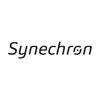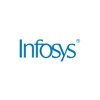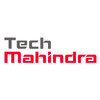Filter interviews by
Elancer It Solutions Interview Questions and Answers
Elancer It Solutions Interview Experiences
6 interviews found
(1 Question)
- Q1. Why did you leave the previous job
- Ans.
Seeking new challenges and growth opportunities in a different work environment.
Desire for career advancement
Seeking new challenges
Relocation
Better work-life balance
Company downsizing or restructuring
Project Assistant Interview Questions asked at other Companies
I applied via LinkedIn
(1 Question)
- Q1. Why you want to join the company
- Ans.
I am passionate about the company's mission and values, and I believe my skills and experience align well with the role.
I admire the company's commitment to sustainability and community involvement
I have relevant experience in project management and coordination
I am excited about the opportunity to contribute to the company's growth and success
Interview Preparation Tips
I applied via Company Website and was interviewed in Sep 2023. There were 2 interview rounds.

(2 Questions)
- Q1. Self introduction
- Q2. What about me other what you like ask me
(2 Questions)
- Q1. Only self introduction
- Q2. Something about this company
Elancer It Solutions interview questions for popular designations
I applied via Job Fair and was interviewed in Nov 2022. There were 2 interview rounds.

(3 Questions)
- Q1. Any experience other companies
- Q2. Elancer it solutions
- Q3. ICICI Bank credit card department
Interview Preparation Tips
- Java Web Services
- DBMS
- Webtechlogy
- C++
Project Assistant Interview Questions asked at other Companies

(3 Questions)
- Q1. What is your family background?
- Q2. Why should we hire you?
- Q3. Tell me about yourself.
Interview Preparation Tips
Be confident
Project Assistant Interview Questions asked at other Companies
Jobs at Elancer It Solutions
Top trending discussions






Interview questions from similar companies

I was interviewed in Jan 2025.
(8 Questions)
- Q1. Self intro and project architecture
- Q2. What are the data sources used?
- Q3. Bigquery architecture
- Q4. Partition vs clustering
- Q5. Bq commands on create table and load csv file
- Q6. Bq commands on show the schema of the table
- Q7. Explain about leaf nodes and columnar storage.
- Q8. How many slots are there in bigquery?

I was interviewed in Jan 2025.
(2 Questions)
- Q1. Skillset, Current CTC, Expected CTC, Notice Period
- Q2. Ready to work 3 days from office Ready to work from client location in Gurgaon (without extra pay)
(11 Questions)
- Q1. Intro, Role and responsibilities in current project
- Q2. Explain test plan in detail Explain software testing life cycle in detail
- Q3. What are joins in sql? Write query (for any one join) and explain that query with output
- Q4. Write test cases for uploading a file and explain each scenario
- Q5. Explain the process of regression testing in detail. Why we do it? When we do it? How we should do it? Explain the strategy to chose regression test suite. What is the current process followed in your proj...
- Q6. How to create a bug in jira? What all information needs to be entered while raising a defect in jira? What labels , tags to be used. Write all information in detail and explain with an example
- Q7. What is priority and severity of a defect? Explain different types. How to chose priority and severity of a defect? Explain everything with example
- Q8. Explain defect management system and test management system in detail. What tools you are using to manage them in your current project
- Q9. Explain the process of test case creating and execution in qtest and how one can check the overall progress of test execution. Based on execution if test report is getting generated, explain that in detail
- Q10. How to check reports generated in sql. What are the benefits of doing database testing
- Q11. What is the tool you are currently using for verifying regulatory reports? Explain the process in detail. What things you verify in those reports
Interview Preparation Tips
It has become a common norm that HR and interviewer does not open their cameras during virtual interview but expect the candidate to open their camera. Technical Interviewer joined 5-10 minutes late in call, when he joined HR greeted him and said Hi Sir. Later on she also asked me to greet him!! In fact, interviewer was quite rude (video camera was already off) and didn't even disclosed his name also (He used initials like SK234097). In the interview, it appeared that he was not able to understand English as a couple of times, he asked to speak slow. He demanded every answer to be explained in detail and with an example, if he was not satisfied with my answer he keep on asking me to explain in different words. Similarly when he asked me a question (and if I did not understand that), I also asked him to explain the question in detail but he kept on repeating that one liner question every time (That behavior showed his stubborn nature and bossiness)

I was interviewed in Jan 2025.
(7 Questions)
- Q1. Basic Javascript questions were asked like Hoisting, Event Loop, Closure.
- Q2. What are semantic tags? << HTML based question
- Ans.
Semantic tags in HTML are specific tags that provide meaning to the content they enclose.
Semantic tags help search engines and screen readers understand the structure of a webpage.
Examples of semantic tags include <header>, <footer>, <nav>, <article>, <section>, <aside>, <main>, <figure>, <figcaption>.
Using semantic tags improves SEO and accessibility of a website.
- Q3. What is currying in js?
- Ans.
Currying is a technique in functional programming where a function with multiple arguments is transformed into a sequence of nested functions, each taking a single argument.
Currying helps in creating reusable functions and partial application.
It allows you to create new functions by fixing some parameters of an existing function.
Example: const add = (a) => (b) => a + b; add(2)(3) will return 5.
- Q4. What is the difference between Map and Filter?
- Ans.
Map is used to transform each element of an array, while Filter is used to select elements based on a condition.
Map returns a new array with the same length as the original array, but with each element transformed based on a provided function.
Filter returns a new array with only the elements that pass a provided condition function.
Example for Map: [1, 2, 3].map(num => num * 2) will result in [2, 4, 6].
Example for Fi...
- Q5. What is the difference between Map and ForEach?
- Ans.
Map creates a new array with the results of calling a provided function on every element, while forEach executes a provided function once for each array element.
Map returns a new array with the same length as the original array, while forEach does not return anything.
Map does not mutate the original array, while forEach can mutate the original array.
Map is more suitable for transforming data and creating a new array, w...
- Q6. What is the difference between Authentication and Authorization?
- Ans.
Authentication verifies the identity of a user, while authorization determines the user's access rights.
Authentication confirms the user's identity through credentials like username and password.
Authorization determines what actions the authenticated user is allowed to perform.
Authentication precedes authorization in the security process.
Example: Logging into a website (authentication) and then accessing specific pages
- Q7. What is the difference between Local storage and Session storage?
- Ans.
Local storage persists even after the browser is closed, while session storage is cleared when the browser is closed.
Local storage has no expiration date, while session storage expires when the browser is closed.
Local storage stores data with no limit, while session storage has a limit of around 5MB.
Local storage data is available across all windows/tabs for that domain, while session storage data is only available wit...
(1 Question)
- Q1. This was the Final round, it lasted for around 30 mins and the interviewer gave me a coding question to build a Countdown Timer app.
Interview Preparation Tips
Also prepare the questions based on HTML, CSS

I was interviewed in Jan 2025.
(6 Questions)
- Q1. What is correlation and parameterization?
- Ans.
Correlation is the process of extracting dynamic values from server responses and passing them to subsequent requests. Parameterization is the process of replacing hard-coded values in scripts with variables.
Correlation involves identifying and capturing dynamic values like session IDs or tokens from server responses.
Parameterization involves replacing hard-coded values in scripts with variables to make them reusable a...
- Q2. Explain load, stress, all testing?
- Ans.
Load testing is to test the system under normal and peak load conditions, stress testing is to test the system beyond its limits, and all testing is a combination of both.
Load testing checks the system's ability to handle expected load levels, ensuring performance under normal conditions.
Stress testing pushes the system beyond its limits to identify breaking points and measure performance degradation.
All testing combin...
- Q3. Explain PTLC?
- Ans.
PTLC stands for Performance Testing Life Cycle, which is a set of activities involved in the performance testing process.
PTLC involves planning, preparation, execution, analysis, and reporting of performance tests.
It includes defining performance goals, creating test scenarios, setting up test environments, running tests, analyzing results, and making recommendations.
Example: In PTLC, performance engineers work closely...
- Q4. Loadrunner scripting, execution and reports issue faced and how to process?
- Ans.
Issues faced in Loadrunner scripting, execution, and reports
Scripting: faced issues with correlation, parameterization, and dynamic data handling
Execution: encountered problems with test environment setup, resource constraints, and test data management
Reports: struggled with result analysis, performance bottlenecks identification, and report customization
- Q5. LG calculation and workload modelling process?
- Ans.
LG calculation and workload modelling process involves determining the number of Load Generators required and creating a realistic simulation of user behavior.
Calculate the number of Load Generators needed based on expected user load and performance goals.
Create workload models by analyzing user behavior patterns, transaction volumes, and system usage.
Consider factors like peak load times, user distribution, and transa...
- Q6. NFR scenarios?
- Ans.
NFR scenarios refer to non-functional requirements that define the quality attributes of a system.
NFR scenarios focus on aspects like performance, scalability, reliability, and security.
Examples include load testing to assess system performance under expected load, stress testing to evaluate system behavior under extreme conditions, and security testing to identify vulnerabilities.
NFR scenarios help ensure that the sys...
(1 Question)
- Q1. Loadrunner questions
(1 Question)
- Q1. Check your soft skills
(1 Question)
- Q1. Complete your details
Elancer It Solutions Interview FAQs
Tell us how to improve this page.
Interview Questions for Popular Designations
- Software Engineer Interview Questions
- Software Developer Interview Questions
- Senior Associate Interview Questions
- Senior Engineer Interview Questions
- Sales Executive Interview Questions
- Associate Software Engineer Interview Questions
- Data Analyst Interview Questions
- System Engineer Interview Questions
- Show more
Elancer It Solutions Interview Process
based on 2 interviews
Interview experience
Interview Questions from Similar Companies
Elancer It Solutions Reviews and Ratings
based on 89 reviews
Rating in categories
|
Project Assistant
354
salaries
| ₹1 L/yr - ₹3.2 L/yr |
|
Project Associate
33
salaries
| ₹1.2 L/yr - ₹3 L/yr |
|
Process Associate
14
salaries
| ₹1.5 L/yr - ₹2.8 L/yr |
|
Team Lead
8
salaries
| ₹3 L/yr - ₹3.5 L/yr |
|
Data Annotation Engineer
5
salaries
| ₹1.8 L/yr - ₹2.2 L/yr |

TCS

Infosys

Wipro

HCLTech
- Home >
- Interviews >
- Elancer It Solutions Interview Questions










